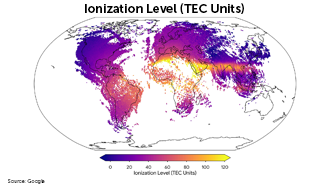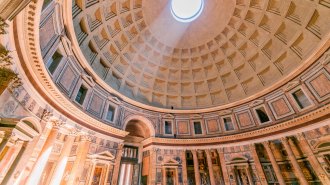Search Results
Astronauts Need Oxygen
Students will consider how atoms and molecules interact with one another. Then they’ll analyze the effects of different types of energy on chemical reactions and how forces impact the motion of gas bubbles in a solution. Students will work in pairs to formalize their thinking using models to understand matter, energy and forces during chemical reactions.

Using smartphone data to probe the ionosphere
A sea of charged particles swirls in the ionosphere, a layer at the edge of Earth’s atmosphere. Shifts in the ionosphere can muddle radio signals key for navigation systems. But pooling data from millions of phones equipped with GPS receivers could help fix errors caused by the meddlesome atmospheric layer.
Spinning spaghetti into nanonoodles
Take a seat, “angel hair” pasta. Scientists just fine-spun the world’s thinnest spaghetti. This nano-noodle recipe calls for modern electrospinning technology blended with creative culinary science — and, of course, a handful of pasta dough. Learn how electrospinning works by comparing the technique to the function of an old-fashioned spinning wheel, at the same time answering questions about polymers and connecting chemistry concepts to textile manufacturing.
A Nuclear-Shmear Campaign
Love mayonnaise or hate it, physicists just put this contentious condiment to work. Scientists struggle to study the behavior of matter during the process of nuclear fusion. Learn how researchers overcame some of these obstacles: They used a condiment with some surprisingly similar characteristics. It also helped them answer questions about the value of models for illustrating scientific processes.
When atoms collide, new elements arise
Take note — there could soon be a new element on the block. By smashing atoms together, scientists have been expanding our periodic table of elements beyond what occurs in nature. Learn how scientists create them while answering questions and discussing how such innovations may help us in the future.
Neutrino-detection issues? Time to tree-cruit!
Physicists propose that trees may help detect high-energy subatomic particles called neutrinos. Learn how Earth’s atmosphere alters these incoming high-energy subatomic particles from space. Then, explore how scientists could use this interplay to develop new ways to detect high-energy neutrinos.
Pink diamonds
Colliding tectonic plates might make your diamond blush. Learn how differences in crystal structure give rise to distinctive physical differences, such as the rare pink diamonds of Western Australia. Answer questions about the value of skepticism in science and discuss how uncovering the history of our planet can give us a treasure-hunting lead.
Applying the ideal gas law
Summary: Students will review the ideal gas law and use a simulation to explain the assumptions made in a recent study about how climate change is impacting baseball.
Learning Outcomes: Exploration of the cause and effect of manipulating conditions of a gas using a simulation, identifying relationships of variables using a mathematical equation and application of theoretical concepts to real-world examples.
How heat and home runs are connected
Students will answer questions about the online Science News article “Baseball’s home run boom is due, in part, to climate change,” which explores how increases in temperatures boost home run numbers. A version of the article, “Climate change spikes baseball homers,” appears in the May 6, 2023 & May 20, 2023 print issue of Science News.
Building bread reveals physical and chemical changes
Many of the things people make — from concrete to bread — undergo physical and chemical changes during production. While making bread, students will learn more about the differences between chemical and physical changes and how the two are related.

Chemists Crack the Code to Ancient Roman Concrete
The ancient Romans built concrete structures that have stood for thousands of years. In this Guide, students will learn how scientists experimented to make Roman-style concrete — without causing explosions!
Concrete physical and chemical changes
Use a real-life example to give students a deeper understanding of physical and chemical changes and properties of substances.